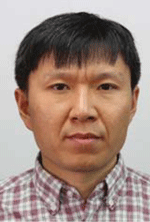Coal identification using neural networks with real-time coalbed methane drilling data
Ruizhi Zhong A C , Raymond JohnsonA School of Chemical Engineering, University of Queensland, Brisbane, Qld 4072, Australia.
B School of Mechanical and Mining Engineering, University of Queensland, Brisbane, Qld 4072, Australia.
C Corresponding author. Email: r.zhong@uq.edu.au
The APPEA Journal 59(1) 319-327 https://doi.org/10.1071/AJ18091
Submitted: 7 December 2018 Accepted: 28 January 2019 Published: 17 June 2019
Abstract
Currently, coal is identified using coring data or log interpretation. Coring is the most dependable methodology, but it is costly and its characterisation is expensive and time consuming. Logging methods are convenient, reliable, and reproducible, but can be subject to statistical and shouldering effects and often have operational difficulties in deviated or horizontal wells. Drilling data, which are routinely available, can potentially be used to identify coal sections in a machine learning environment when conventional wireline logs are not available.
To achieve this, a four-layer artificial neural network (ANN) was used to identify coals in a well at Walloon Sub-Group, Surat Basin. The ANN model used drilling data and some logging-while-drilling (LWD) data. The inputs for the lithological model from high-frequency drilling data include weight on bit, rotary speed, torque, and rate of penetration. Inputs from LWD data include gamma ray and hole diameter. The criterion for coal identification is based on bulk density cutoff.
The simulation results show that the ANN can deliver an overall accuracy of 96%. Due to the low net-to-gross ratio of coals within the Walloon sequence, a lower but reasonable F1 score of 0.78 is achievable for the coal sections. The proposed model can potentially be implemented in real-time to identify coal intervals without additional logs and aid validation of minimal log data.
Keywords: artificial neural network (ANN), coal identification, coal seam gas, drilling data, machine learning.

Ruizhi Zhong is a postdoctoral research fellow in the School of Chemical Engineering at the University of Queensland. His research interests include drilling engineering, machine learning, hydraulic fracturing, and geomechanics. His recent work involves the application of machine learning for drilling applications. He holds a PhD in Petroleum Engineering from the University of Tulsa and an MS in Petroleum and Natural Gas Engineering from West Virginia University. He is a member of Society of Petroleum Engineers (SPE). |

Raymond (Ray) L. Johnson, Jr. is presently Professor of Well Engineering and Production Technology at the University of Queensland, School of Chemical Engineering, and serves as Adjunct Associate Professor at the University of Adelaide. He has a PhD in Mining Engineering, an MSc in Petroleum Engineering, a Graduate Diploma in Information Technology, and a BA in Chemistry. Ray has been active in the SPE, past chair of the SPE Queensland Section, 2013 and 2015 co-Chair of the SPE Unconventional Reservoir Conference and Exhibition Asia Pacific, and Technical Award Recipient of SPE Regional Awards in 2011 and 2017. He has been actively involved as an author and researcher in the areas of reservoir geomechanics, hydraulic fracture design execution and evaluation, and unconventional resource development. |

Dr Zhongwei Chen gained his PhD in Petroleum Engineering from the University of Western Australia in September 2012. He joined the University of Queensland as an associate lecturer in January 2013, and is currently a senior lecturer in mining engineering at UQ School of Mechanical and Mining Engineering. His research interests are in the areas of unconventional geomechanics, fluid flow in fractured porous media, and the coupled computational modelling associated with unconventional gas extraction, CO2 sequestrations, and underground coal mining operations. He is the recipient of American Rock Mechanics Research Award for 2011, a member of SPE and AusIMM, and has served as an associate editor of International Journal of Oil, Gas and Coal Technology since 2015. |

Nathaniel Chand is a data analyst in the School of Chemical Engineering at the University of Queensland. His main interests include machine learning, operations research, and data analytics. His recent work involves identifying pressure-dependent effects on coal permeability and productivity indices. He holds a BE in Mechanical Engineering and a BSc in Mathematics from the University of Queensland. |
References
Al-Anazi, A., and Gates, I. D. (2010). On the capability of support vector machines to classify lithology from well logs. Natural Resources Research 19, 125–139.| On the capability of support vector machines to classify lithology from well logs.Crossref | GoogleScholarGoogle Scholar |
Amani, A., and Shahbazi, K. (2013). Prediction of rock strength using drilling data and sonic data. International Journal of Computers and Applications 81, 7–11.
Asadi, A. (2017). Application of artificial neural networks in prediction of uniaxial compressive strength of rocks using well logs and drilling data. Procedia Engineering 191, 279–286.
| Application of artificial neural networks in prediction of uniaxial compressive strength of rocks using well logs and drilling data.Crossref | GoogleScholarGoogle Scholar |
Bilgesu, H. I., Tetrick, L. T., Altmis, U., Mohaghegh, S., and Ameri, S. (1997). A new approach for the prediction of rate of penetration (ROP) values. In ‘SPE Eastern Regional Meeting’. (Society of Petroleum Engineers: Lexington, Kentucky, USA.)
Fazaelizadeh, M., Rashidi, B., and Hareland, G. (2010). Drilling-derived rock strength can simulate upcoming well performance. In ‘Canadian Unconventional Resources and International Petroleum Conference’. (Society of Petroleum Engineers: Calgary, Alberta, Canada.)
Gidh, Y. K., Purwanto, A., and Ibrahim, H. (2012). Artificial neural network drilling parameter optimization system improves ROP by predicting/managing bit wear. In ‘SPE Intelligent Energy International’. (Society of Petroleum Engineers: Utrecht, The Netherlands.)
Haecker, A., Lakings, J., Marshall, E., and Ulla, J. (2017). A novel technique for measuring (not calculating) Young’s modulus, Poisson’s ratio and fractures downhole: a Bakken case study. In ‘SPWLA 58th Annual Logging Symposium’. (Society of Petrophysicists and Well-Log Analysts: Oklahoma City, Oklahoma, USA.)
Hegde, C., Daigle, H., Millwater, H., and Gray, K. (2017). Analysis of rate of penetration (ROP) prediction in drilling using physics-based and data-driven models. Journal of Petroleum Science Engineering 159, 295–306.
| Analysis of rate of penetration (ROP) prediction in drilling using physics-based and data-driven models.Crossref | GoogleScholarGoogle Scholar |
Hegde, C., Daigle, H., and Gray, K. E. (2018). Performance comparison of algorithms for real-time rate-of-penetration optimization in drilling using data-driven models. SPE Journal 23, 1706–1722.
| Performance comparison of algorithms for real-time rate-of-penetration optimization in drilling using data-driven models.Crossref | GoogleScholarGoogle Scholar |
Jacques, A., Ouenes, A., Dirksen, R., Paryani, M., Rehman, S., and Bari, M. (2017). Completion optimization while drilling - geomechanical steering towards fracable rock using corrected mechanical specific energy. In ‘SPE/AAPG/SEG Unconventional Resources Technology Conference’. (Unconventional Resources Technology Conference: Austin, Texas, USA.) https://doi.org/10.15530/URTEC-2017-2693870
Kumar, B. R., Vardhan, H., Govindaraj, M., and Saraswathi, S. P. (2013). Artificial neural network model for prediction of rock properties from sound level produced during drilling. Geomechanics and Geoengineering 8, 53–61.
| Artificial neural network model for prediction of rock properties from sound level produced during drilling.Crossref | GoogleScholarGoogle Scholar |
LaBelle, D., Bares, J., and Nourbakhsh, I. (2000). Material classification by drilling. Proceedings of the 17th International Symposium on Automation and Robotics in Construction. (International Association for Automation and Robotics in Construction)
Lehman, L. V., Jackson, K., and Noblett, B. (2016). Big data yields completion optimization: using drilling data to optimize completion efficiency in a low permeability formation. In ‘SPE Annual Technical Conference and Exhibition’. (Society of Petroleum Engineers: Dubai, UAE.)
Leung, R., and Scheding, S. (2015). Automated coal seam detection using a modulated specific energy measure in a monitor-while-drilling context. International Journal of Rock Mechanics and Mining Sciences 75, 196–209.
| Automated coal seam detection using a modulated specific energy measure in a monitor-while-drilling context.Crossref | GoogleScholarGoogle Scholar |
Li, G. (2010). Research on the identification method of lithology drilling with PDC bit. In ‘2010 International Symposium on Computational Intelligence and Design’, pp. 152–155. (IEEE.)
Moazzeni, A., and Haffar, M. A. (2015). Artificial intelligence for lithology identification through real-time drilling data. Journal of Earth Science & Climatic Change 6, 1–4.
Mullen, M. J., Roundtree, R., and Turk, G. A. (2007). A composite determination of mechanical rock properties for stimulation design (what to do when you don’t have a sonic log). In ‘Rocky Mountain Oil & Gas Technology Symposium’. (Society of Petroleum Engineers: Denver, Colorado, USA.)
Nielsen, M. A. (2015). Neural Networks and Deep Learning. (Determination Press.)
Pedregosa, F., Varoquaux, G., Gramfort, A., and Michel, V. (2011). Scikit-Learn: machine learning in Python. Journal of Machine Learning Research 12, 2825–2830.
Schmidhuber, J. (2015). Deep learning in neural networks: an overview. Neural Networks 61, 85–117.
| Deep learning in neural networks: an overview.Crossref | GoogleScholarGoogle Scholar | 25462637PubMed |
Scoble, M. J., and Peck, J. (1987). A technique for ground characterization using automated production drill monitoring. International Journal of Surface Mining, Reclamation and Environment 1, 41–54.
| A technique for ground characterization using automated production drill monitoring.Crossref | GoogleScholarGoogle Scholar |
Soares, C., and Gray, K. (2019). Real-time predictive capabilities of analytical and machine learning rate of penetration (ROP) models. Journal of Petroleum Science Engineering 172, 934–959.
| Real-time predictive capabilities of analytical and machine learning rate of penetration (ROP) models.Crossref | GoogleScholarGoogle Scholar |
Tahmeen, M., Love, J., Rashidi, B., and Hareland, G. (2017). Complete geomechanical property log from drilling data in unconventional horizontal wells. In ‘51st U.S. Rock Mechanics/Geomechanics Symposium’. (American Rock Mechanics Association: San Francisco, CA, USA.)
Utt, W. K. (1999). Neural network technology for strata strength characterization. In ‘IJCNN’99. International Joint Conference on Neural Networks, 10–16 July 1999, Washington, DC’. pp. 3806–3809. (IEEE.)
Wang, G., and Carr, T. R. (2012). Methodology of organic-rich shale lithofacies identification and prediction: a case study from Marcellus Shale in the Appalachian Basin. Computers & Geosciences 49, 151–163.
| Methodology of organic-rich shale lithofacies identification and prediction: a case study from Marcellus Shale in the Appalachian Basin.Crossref | GoogleScholarGoogle Scholar |
Wang, K., and Zhang, L. (2008). Predicting formation lithology from log data by using a neural network. Petroleum Science 5, 242–246.
| Predicting formation lithology from log data by using a neural network.Crossref | GoogleScholarGoogle Scholar |
Xie, Y., Zhu, C., Zhou, W., Li, Z., Liu, X., and Tu, M. (2018). Evaluation of machine learning methods for formation lithology identification: a comparison of tuning processes and model performances. Journal of Petroleum Science Engineering 160, 182–193.
| Evaluation of machine learning methods for formation lithology identification: a comparison of tuning processes and model performances.Crossref | GoogleScholarGoogle Scholar |
Zhou, H., Hatherly, P., Ramos, F., and Nettleton, E. (2011).An adaptive data driven model for characterizing rock properties from drilling data. In ‘2011 IEEE International Conference on Robotics and Automation, 9–13 May 2011, Shanghai, China’, pp. 1909–1915. (IEEE.)


